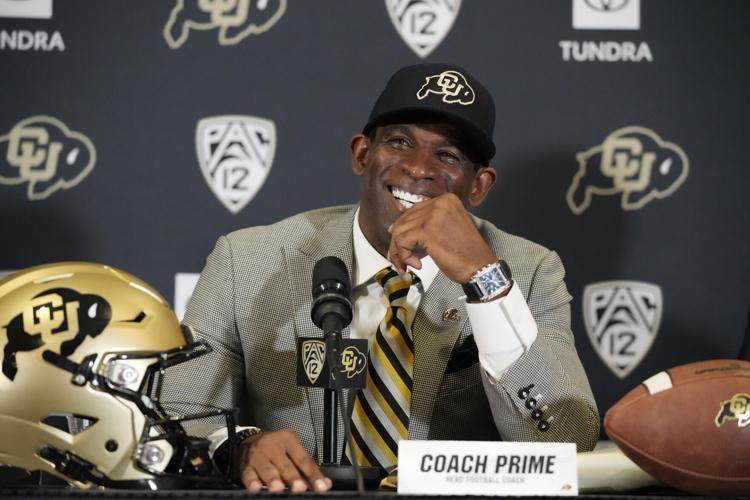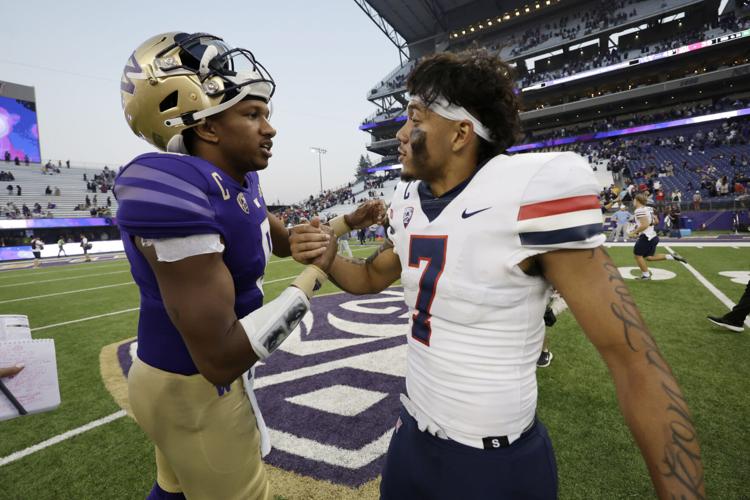It took a month longer than expected for the Pac-12 to finalize the 2023 football schedule, then a full 60 minutes for the public reveal on Pac-12 Networks.
Was it worth the wait?
From the standpoint of competitive balance, yes. With little calendar flexibility (10 weeks for nine games) and a slew of likely Top 25 teams, the conference managed to craft a lineup that provides the best chance for collective success:
Except for USC, whose schedule is complicated by the Notre Dame series, each team has a bye during the middle third of the season.
Nobody plays a road game against a team coming off a bye.
Nobody opens the conference season with consecutive games on the road.
Each team plays back-to-back road games once during the season (except Oregon).
Granted, the degree of difficulty isn’t distributed equally. Washington plays USC and Utah; Washington State does not. USC plays Washington and Oregon; UCLA does not.
But those differences result from the underlying model in place for 2023. The Pac-12 scrapped the North-South structure last spring but is still using the crossover schedule rotation devised for divisions.
The trick for the conference office was ordering the games in a manner that avoided overloading any particular team while creating marquee matchups spread across the 10 weeks of league play.
With the Deion Sanders era underway at Colorado, as many as six teams expected to start the season in the AP Top 25 poll (USC, Utah, Oregon, Washington, Oregon State and possibly UCLA), there was no shortage of premium inventory.
Once conference play begins in force (Week 4), only one Saturday is devoid of a matchup worthy of the primetime windows on Fox or ABC/ESPN.
The choice game each week, as we see it:
Sept. 23: UCLA at Utah
Sept. 30: USC at Colorado
Oct. 7: No marquee game (Washington, Utah and Oregon are idle)
Oct. 14: Oregon at Washington
Oct. 21: Utah at USC
Oct. 28: Oregon at Utah
Nov. 4: Washington at USC
Nov. 11: Utah at Washington
Nov. 18: UCLA at USC
Nov. 25: Washington State at Washington
(There is only one game scheduled for Black Friday: Oregon State at Oregon.)
As for the team-specific schedules, we have a thought … or four:
Arizona
Year 3 of the Jedd Fisch era is all about navigating the start of league play: Three of the first four games are on the road (Stanford, USC and Washington State), and the lone home date is Washington. If the Wildcats manage to split that quartet — and handle their business against NAU and UTEP — then Arizona’s first bowl berth since 2017 should follow later in the season.
Arizona State
The first year of Kenny Dillingham’s tenure features eight home games, most of them early in the season. The Sun Devils open league play against USC, and the finish is rugged with Utah and UCLA on the road (in back-to-back fashion) and Oregon and Arizona at home. If ASU plans to become bowl-eligible, it needs to have five wins locked up when November arrives.
Cal
No team faces a more difficult array of road games than the Golden Bears, who visit UCLA, Utah, Washington and Oregon (plus Stanford). Oh, and they host Auburn in Week 2. Considering how the schedule could have played out, the Bears should be satisfied with the final version: It gives them the best possible chance to succeed. The finale at the Rose Bowl will be Cal’s last scheduled game against UCLA, which heads to the Big Ten in 2024.

The arrival of Deion Sanders in Boulder should lead to some 'Prime Time' TV opportunities for Colorado in 2023.
Colorado
How’s this for intrigue: The Buffaloes open the Deion Sanders era at TCU and face hated Nebraska in the home opener; they open conference play at Oregon; and they welcome USC for the conference opener. (Any of those four could end up on Fox or ESPN/ABC.) Of note: Colorado and Cal are the only teams that finish with back-to-back road games.
Oregon
The Ducks should be delighted with the end result. Considering they play Washington and Utah on the road and USC at home — their first regular-season date with the Trojans since 2019 — the lineup could have been vastly more daunting. They have a bye before Washington, host WSU before heading to Utah and face Cal before USC’s visit. And even though the Ducks play consecutive road games (Stanford and UW), they are broken up with a bye.
Oregon State
The start and finish to league play are daunting. The Beavers open with a trip to Washington State, then host Utah; and they finish with Washington at home and a visit to Oregon. In between, there is no cause for alarm for a program coming off a 10-win season. Even the back-to-back road games (Colorado and Arizona) are manageable. And what’s more, they follow a bye.
Stanford
Compared to the brutal 2022 schedule, this edition feels like a garden stroll on a warm summer evening. The bye for new coach Troy Taylor comes in Week 6, not Week 3; Utah is nowhere to be found; and the Cardinal play seven weeks in a row, not 10. Also, the odd-year rotation means Oregon, Washington, UCLA and Notre Dame are at home, not on the road.
UCLA
The Bruins once again have a schedule built for success with a low-stress non-conference lineup — Michigan was supposed to visit the Rose Bowl but canceled — and favorable intra-league matchups. UCLA has a bye to recover from visiting Utah, doesn’t play Oregon or Washington and faces the Arizona schools and Cal down the stretch (along with USC).
USC
The Trojans have a complicated schedule due to the midseason trip to South Bend. They opted to play San Jose State on Week 0 as a replacement for BYU, which was originally slotted for the final Saturday. (BYU’s entry into the Big 12 has consequences for the Pac-12 schedule moving forward.) USC’s second-half schedule is stout with Notre Dame, Utah, Cal, UW, Oregon and UCLA. But as was the case in 2017 and 2019, USC is idle on the final Saturday — the weekend before the Pac-12 title game.
Utah
The Utes could move their opener against Florida to Thursday to create extra time before a trip to Baylor. They visit Oregon State on a short week and have a high-mileage road back-to-back (Seattle and Tucson). But the key stretch starts Oct. 21, when the Utes play USC (road), Oregon (home) and Washington (road) in a four-week span. When it ends, we’ll know if another title is feasible.

Washington and QB Michael Penix Jr., left, are slated to face Arizona and Jayden de Laura on Sept. 30 in Tucson in the Wildcats' Pac-12 home opener.
Washington
If the Huskies are, in fact, a playoff candidate, and if quarterback Michael Penix is, indeed, a Heisman contender, they will have ample opportunity to shine down the stretch. November brings USC (road) and Utah (home) in back-to-back fashion, followed by a trip to OSU and the Apple Cup in Seattle. The Oregon showdown comes earlier than usual (Oct. 14).
Washington State
The Cougars are a prime beneficiary of the schedule rotation, as they miss both USC and Utah. They also get Oregon in a vulnerable situation following its showdown with UW. The road back-to-back is somewhat arduous (Eugene and Tempe). But with Arizona, Stanford and Colorado at home, plus a manageable non-conference lineup, the ingredients are present for another bowl berth.
College football head coaches at Bowl Subdivision public schools earned just over $12.2 million in bonuses.







